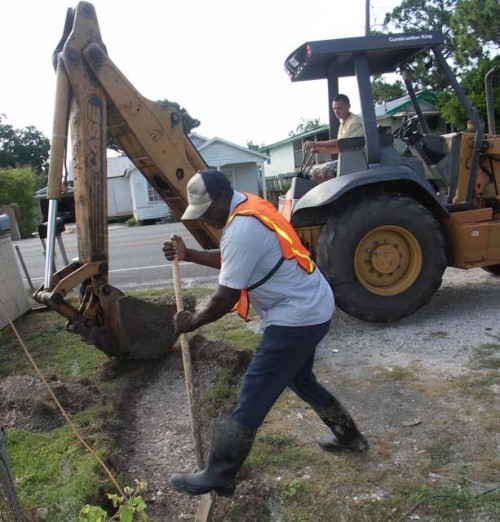
Family: Murder victim cared about welfare of others
July 5, 2011
CDBG flow should ease future disaster
July 7, 2011During the times of gangsters and prohibition, aviation racing was the sport of speed. Although it is hard to imagine what it was like – the danger and thrill of air racing – one local museum is immersing visitors into the action.
The Wedell-Williams Aviation and Cypress Sawmill Museum, a property of the Louisiana State Museum, tells the story of two local aviation pioneers and the sport that made them famous.
“Air racing in the 1930s was like NASCAR with wings,” says Diana Buckley, the museum’s curator of science and technology. “And it had a lot more glamour.”
With its 180-degree surround video screens, state-of-the-art animation and sound and wind special effects, the David J. Felterman Theater at the museum is a family-friendly time machine putting visitors in the stands of an air race in the 1930s. The stubby, streamlined beauties come roaring around the pylons, monster engines at full throttle. Your neck cranes to follow the action overhead. Prop wash blows past your face.
“This is one of the few places you can see racing airplanes from the 1930s – the golden age,” explains Arthur Smith, director of public relations for the Louisiana State Museum.
In 1928, Jimmie Wedell, a plane designer and aviator, and Harry Williams, a lumber millionaire, formed an air service in Patterson. The Wedell-Williams Air Service grew from an air-mail and freight company to also become a highly successful professional air-race team.
The planes of the Wedell-Williams Aviation Collection on display include the famous Miss Patterson “44” and the Gilmore “121”, the “92” and the “45”. They were built at the old We-Will Aircraft Company hangar at the Patterson airport, making Louisiana a center for advanced aviation technology at the time.
In a separate wing, the museum presents the story of Louisiana’s cypress logging industry with a fascinating collection of sawmill equipment and other artifacts, and a short film.
The Patterson Cypress Sawmill Collection documents the history of the cypress lumber industry in Louisiana. Lumbering became the state’s first significant manufacturing industry. As a result, cypress lumber harvested and milled in Louisiana was shipped in mass quantities across the U.S.
Patterson was once home to the largest cypress sawmill in the world, owned by Frank B. Williams, and in 1997, the Louisiana State Legislature designated Patterson as the “Cypress Capitol of Louisiana.” The exhibit features a variety of artifacts, photographs, and film that tell the story of this important regional industry.
The museum also has a changing exhibit gallery that highlights other aspects of Louisiana’s history.
Thousands of locals and visitors gather on the museum grounds for the annual Cypress Sawmill Festival in April, which raises funds for the museum’s community support groups.
“This is one of the great little gems in the museum world,” said Smith.
The Wendell-Williams Aviation and Cypress Sawmill Museum is located just off U.S. Highway 90 in Kemper Williams Park, adjacent to the Patterson Civic Center. It is open 9:30 a.m. to 4 p.m. Tuesday-Saturday and admission is free. For more information, call the Cajun Coast Convention & Visitors Bureau’s at (800) 256-2931, or visit cajuncoast.com.





